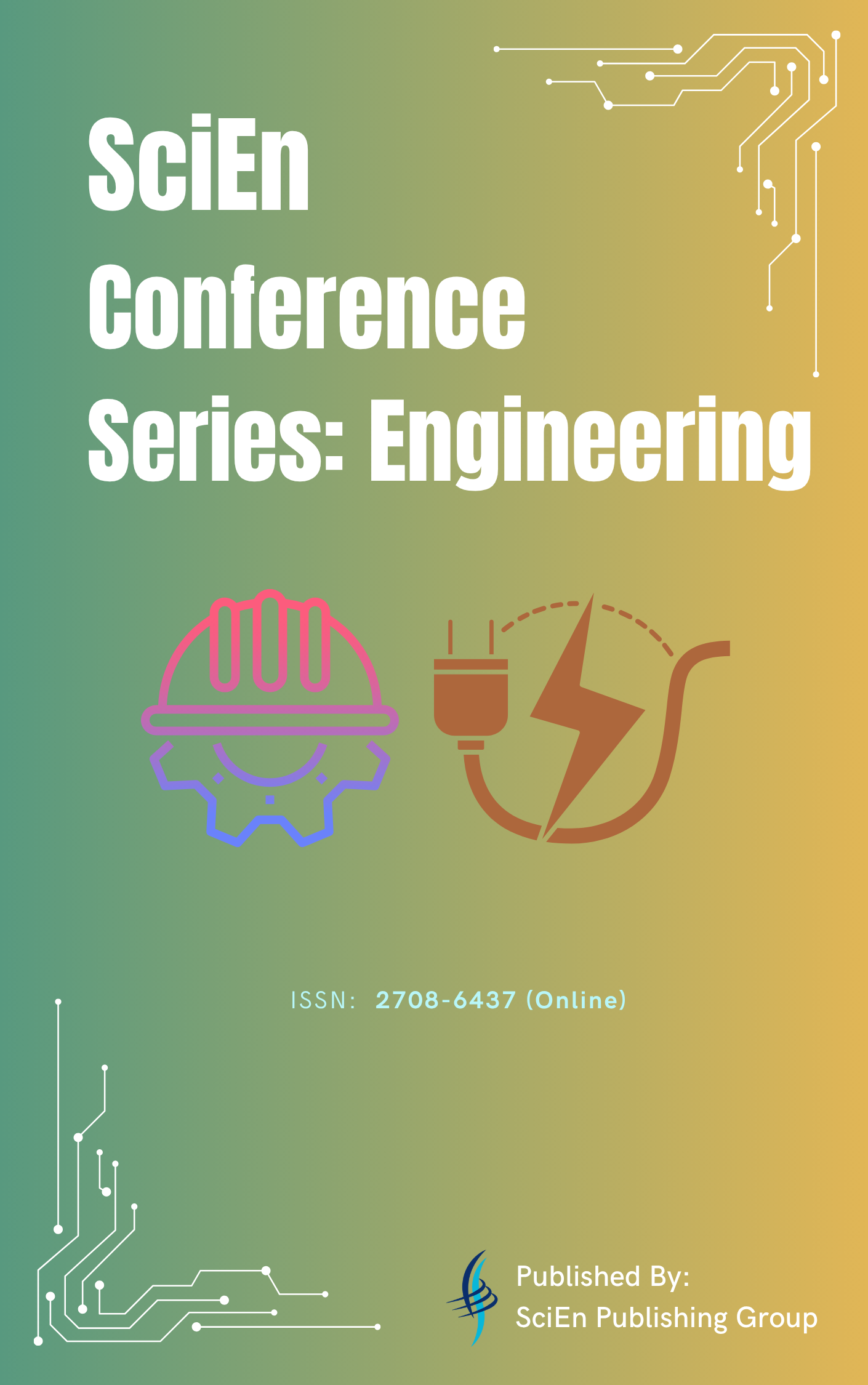A Numerical Approach to Investigate the Influence of Resonator Setting and Volume Fraction on Stop Bands in an Acoustic Metamaterial
DOI:
https://doi.org/10.38032/jea.2020.03.003Keywords:
Acoustic metamaterial, Band gap, Split-ring resonator, Volume fraction, Wave filtrationAbstract
A quest for physics-based understanding of engineered metamaterials inspired numerous researchers to extract intricate features such as guiding and filtering elastic waves, wave focusing, topological insulation, cloaking etc. A traditional metamaterial is composed of a heavy core along with some other materials of dissimilar mechanical properties (e.g. stiffness, density). It is well-established that the frequency band gap can be formed by introducing the desired inconsistency of material properties between stiffer resonators and adjacent embedding matrices. Frequency band gaps are fundamental requirements of many engineering applications such as vibration control, noise mitigation, and energy concentrations. Hence, advanced researches are being carried out continuously to understand the control parameters (e.g. bandwidth, starting and ending frequencies) of the frequency band gap. In this article, a mass-in-mass metamaterial using elliptical anisotropic resonators are considered to investigate the influence of resonators’ geometric factors and volume fraction on band gap parameters. While the elliptical resonator is splitted diagonally in one or both opposite ends to analyze the influence of volume fraction of the resonators on stop bands, a second set of half-circular resonators are also investigated to analyze the impact of resonator parameters on frequency bands.
References
Smith, D.R., Pendry, J.B. and Wiltshire, M.C., 2004. Metamaterials and negative refractive index. Science, 305(5685), pp.788-792.
Pendry, J.B., Holden, A.J., Robbins, D.J. and Stewart, W.J., 1999. Magnetism from conductors and enhanced nonlinear phenomena. IEEE transactions on microwave theory and techniques, 47(11), pp.2075-2084.
Smirnova, E.I., Mastovsky, I., Shapiro, M.A., Temkin, R.J., Earley, L.M. and Edwards, R.L., 2005. Fabrication and cold test of photonic band gap resonators and accelerator structures. Physical Review Special Topics-Accelerators and Beams, 8(9), p.091302.
Liu, Z., Chan, C.T. and Sheng, P., 2005. Analytic model of phononic crystals with local resonances. Physical Review B, 71(1), p.014103.
Mei, J., Liu, Z., Wen, W. and Sheng, P., 2006. Effective mass density of fluid-solid composites. Physical review letters, 96(2), p.024301.
Ahmed, R. and Banerjee, S., 2013, April. Novel split ring metamaterial for multiple band gaps and vibration control. In Health Monitoring of Structural and Biological Systems 2013 (Vol. 8695, p. 86952L). International Society for Optics and Photonics.
Ahmed, H., Ahmed, R., Indaleeb, M.M. and Banerjee, S., 2018. Multifunction acoustic modulation by a multi-mode acoustic metamaterial architecture. Journal of Physics Communications, 2(11), p.115001.
Sigalas, M.M. and Economou, E.N., 1992. Elastic and acoustic wave band structure. Journal of sound and vibration, 158(2), pp.377-382.
Poulton, C.G., Movchan, A.B., McPhedran, R.C., Nicorovici, N.A. and Antipov, Y.A., 2000. Eigenvalue problems for doubly periodic elastic structures and phononic band gaps. Proceedings of the Royal Society of London. Series A: Mathematical, Physical and Engineering Sciences, 456(2002), pp.2543-2559.
Ahmed, R. and Banerjee, S., 2015. Bio-Inspired Design of a Multi-scale Pass Band Frequency Sensor Using Local Resonance Phenomena. In Experimental and Applied Mechanics, Volume 6 (pp. 21-27). Springer, Cham.
Ahmed, R., Madisetti, D. and Banerjee, S., 2017. A sub-wavelength scale acoustoelastic sonic crystal for harvesting energies at very low frequencies (<∼ 1 kHz) using controlled geometric configurations. Journal of Intelligent Material Systems and Structures, 28(3), pp.381-391.
Banerjee, S. and Ahmed, R., University of South Carolina, 2020. Power optimization for a unit cell metamaterial energy harvester. U.S. Patent 10,694,466.
Hirsekorn, M., Delsanto, P.P., Batra, N.K. and Matic, P., 2004. Modelling and simulation of acoustic wave propagation in locally resonant sonic materials. Ultrasonics, 42(1-9), pp.231-235.
Oudich, M., Li, Y., Assouar, B.M. and Hou, Z., 2010. A sonic band gap based on the locally resonant phononic plates with stubs. New Journal of Physics, 12(8), p.083049.
Caballero, D., Sánchez-Dehesa, J., Rubio, C., Martinez-Sala, R., Sánchez-Pérez, J.V., Meseguer, F. and Llinares, J., 1999. Large two-dimensional sonic band gaps. Physical Review E, 60(6), p.R6316.
Chesnais, C., Boutin, C. and Hans, S., 2012. Effects of the local resonance on the wave propagation in periodic frame structures: Generalized Newtonian mechanics. The Journal of the Acoustical Society of America, 132(4), pp.2873-2886.
Ahmed, R.U. and Banerjee, S., 2013. Wave propagation in metamaterial using multiscale resonators by creating local anisotropy. International Journal of Modern Engineering, 13(2), p.51.
Liang, X., Wang, T., Jiang, X., Liu, Z., Ruan, Y. and Deng, Y., 2019. A numerical method for flexural vibration band gaps in a phononic crystal beam with locally resonant oscillators. Crystals, 9(6), p.293.
J LUO, J., YAO, L., JIANG, G. and WU, F., 2019. A study on the vibration band gap and vibration characteristics of a cylindrical shell phononic crystal. Journal of Vibration and Shock, (8), p.20.
Huang, G.L. and Sun, C.T., 2010. Band gaps in a multiresonator acoustic metamaterial. Journal of Vibration and Acoustics, 132(3).
Huang, H.H., Sun, C.T. and Huang, G.L., 2009. On the negative effective mass density in acoustic metamaterials. International Journal of Engineering Science, 47(4), pp.610-617.
Ahmed, R.U. and Banerjee, S., 2013. Wave propagation in metamaterial using multiscale resonators by creating local anisotropy. International Journal of Modern Engineering, 13(2), p.51.
Movchan, A.B. and Guenneau, S., 2004. Split-ring resonators and localized modes. Physical Review B, 70(12), p.125116.
Hsu, J.C., 2011. Local resonances-induced low-frequency band gaps in two-dimensional phononic crystal slabs with periodic stepped resonators. Journal of Physics D: Applied Physics, 44(5), p.055401.
Liu, Z., Zhang, X., Mao, Y., Zhu, Y.Y., Yang, Z., Chan, C.T. and Sheng, P., 2000. Locally resonant sonic materials. Science, 289(5485), pp.1734-1736.
Li, J. and Chan, C.T., 2004. Double-negative acoustic metamaterial. Physical Review E, 70(5), p.055602.
Milton, G.W. and Willis, J.R., 2007. On modifications of Newton's second law and linear continuum elastodynamics. Proceedings of the Royal Society A: Mathematical, Physical and Engineering Sciences, 463(2079), pp.855-880.
Yao, S., Zhou, X. and Hu, G., 2008. Experimental study on negative effective mass in a 1D mass–spring system. New Journal of Physics, 10(4), p.043020.
Downloads
Published
Issue
Section
License
All the articles published by this journal are licensed under a Creative Commons Attribution-NonCommercial 4.0 International License

